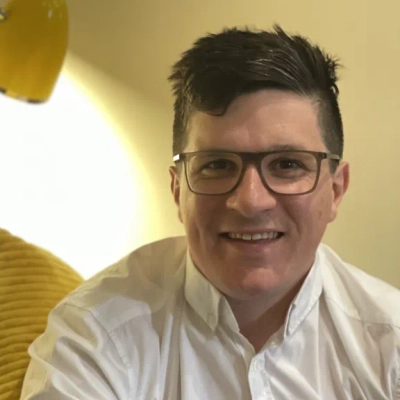7 Mental Techniques to Achieve Seemingly Impossible Fitness Goals
Achieving seemingly impossible fitness goals requires more than physical strength—it demands mental fortitude. This article delves into powerful mental techniques that can transform your fitness journey. Drawing from insights provided by experts in the field, these strategies will help you overcome obstacles and reach new heights in your fitness pursuits.
- Break Goals into Manageable Milestones
- Transform Your Body for New Challenges
- Visualize Success in Small Steps
- Persevere Through Targeted Training
- Build Strength One Day at a Time
- Reframe Discomfort as Growth
- Master the Sectional Blueprint Check
Break Goals into Manageable Milestones
A goal that once felt completely out of reach was running my first 10K. When I started, even jogging a single kilometre left me winded and frustrated. What helped me push through wasn't just physical training - it was breaking the distance into tiny, manageable milestones. I focused on getting through the next 500 metres, then the next kilometre, instead of fixating on the full 10K.
Mentally, I used the simple technique of imagining crossing the finish line and reminding myself of all the small runs I had completed along the way. Celebrating each incremental improvement built my confidence and silenced the self-doubt that had been holding me back. By race day, what once seemed impossible became a reality, and the process taught me that consistency and mindset often matter more than raw physical ability.

Transform Your Body for New Challenges
Running a marathon after years of powerlifting felt like trying to turn a tank into a race car.
My body was stiff and built for explosive power, not hours of steady endurance, and in the beginning, even short runs felt brutal. The mental shift came when I stopped focusing on the full 42km and started breaking it down into small milestones. I changed my music, kept my heart rate in check, and treated each kilometre like its own set. That focus on controlling energy and fighting the constant urge to stop is what carried me across the finish line.

Visualize Success in Small Steps
I once set a goal to do a full sprint triathlon, and at the start, it felt like a pipe dream—I could barely swim a few laps without gasping. Breaking it down into smaller, measurable steps was the key to making it happen. I focused on one discipline at a time: first improving my swimming, then building my cycling endurance, and finally increasing my running stamina. Visualization was huge; I mentally rehearsed each segment of the race every day, imagining myself looking good and finishing strong. I also kept a journal to track progress and celebrate small wins and to remind myself that improvement was possible. Having training partners who held me accountable for my training minimized the negative self-talk. By the time the race rolled around, the distance that once seemed impossible felt doable, and crossing that finish line was one of the most empowering experiences of my life.

Persevere Through Targeted Training
For me, doing straight pull-ups seemed impossible. My arms were weak, and my grip wasn't strong enough. Talking to a gym instructor, she told me that anyone could do pull-ups with specific training, so I decided to give it a try.
My instructor gave me exercises to strengthen my arms and some specific ones for the pull-up movement. At first, I started with staggered movements, then I began using the resistance band, and finally, after three months of intensive work, I achieved my first pull-up without swinging or using elastic bands. I was very proud of myself and very grateful to my instructor for believing in me.
If you have a fitness goal, focus on it. I promise it will be worth it, and you will feel incredible and invincible when you achieve it. Don't give up!

Build Strength One Day at a Time
I don't have "fitness goals" in the corporate sense. The most challenging goal I ever achieved was to feel strong enough to get through a long day on the roof without feeling completely drained. My mental technique for overcoming self-doubt was simple: I just focused on one day at a time.
When I was younger, a long day on a roof felt impossible. My body would ache, and I was just exhausted. The self-doubt I had was simple: I was a guy who was not strong enough for the work. I started making a commitment to my health. I started going to the gym before work. I wasn't trying to get a six-pack. I was just trying to get strong enough for the work. My "mental technique" was simple: I just put my head down and did the work.
The "impossible" goal was a metaphor for a simple, hands-on one. I was able to get through a long day on the roof without feeling completely exhausted. This had a huge impact on my business. I'm not as exhausted after a long day on the roof. I'm able to be a more present person and a more focused leader.
My advice to anyone is to stop looking for a complicated "mental technique" to overcome self-doubt. The best way to do it is to just put your head down and do the work. The "mental technique" that has ever worked for me is a simple, human one. The only way to be a good professional is to be a person who is committed to a simple, hands-on solution.
Reframe Discomfort as Growth
Running a half marathon once felt out of reach, especially during the early weeks when even a few miles left me winded. The turning point came from breaking the goal into manageable increments and focusing on progress rather than distance left to cover. A mental technique that proved powerful was reframing discomfort as evidence of growth instead of limitation. Each time doubt surfaced, the reminder was simple: the strain meant the body was adapting. Pairing that mindset with consistent training built confidence steadily. Crossing the finish line was less about speed and more about realizing that self-doubt had been the greatest hurdle. The experience reinforced that persistence, paired with reframing challenges, can make the impossible gradually attainable.

Master the Sectional Blueprint Check
Overcoming something that feels impossible is the greatest reward, and it's wonderful that you're focused on the mental side of achievement. My biggest physical goal was about the endurance needed for my most complex jobs. The "radical approach" was a simple, human one.
The process I had to completely reimagine was how I dealt with fatigue. Early in my career, the thought of wiring a whole commercial building, working with heavy gauge cable overhead all day, felt physically impossible. I realized that a good tradesman solves a problem by treating his body like a system.
The mental technique that helped me overcome self-doubt was The Sectional Blueprint Check. I stopped looking at the entire massive job ahead of me. Instead, I focused solely on completing the current, small section of the blueprint perfectly. By committing all my focus to that one connection or that one run of conduit, the large, overwhelming goal simply vanished.
The success was fantastic. This methodical focus created consistency in my work and built my endurance slowly and surely. I learned that fear is just wasted energy—you beat the challenge by focusing on the process, not the finish line.
My advice for others is to break the job into small, manageable tasks. A job done right is a job you don't have to go back to. Focus on completing the section right in front of you perfectly. That's the most effective way to "overcome self-doubt" and build a career that will last.



